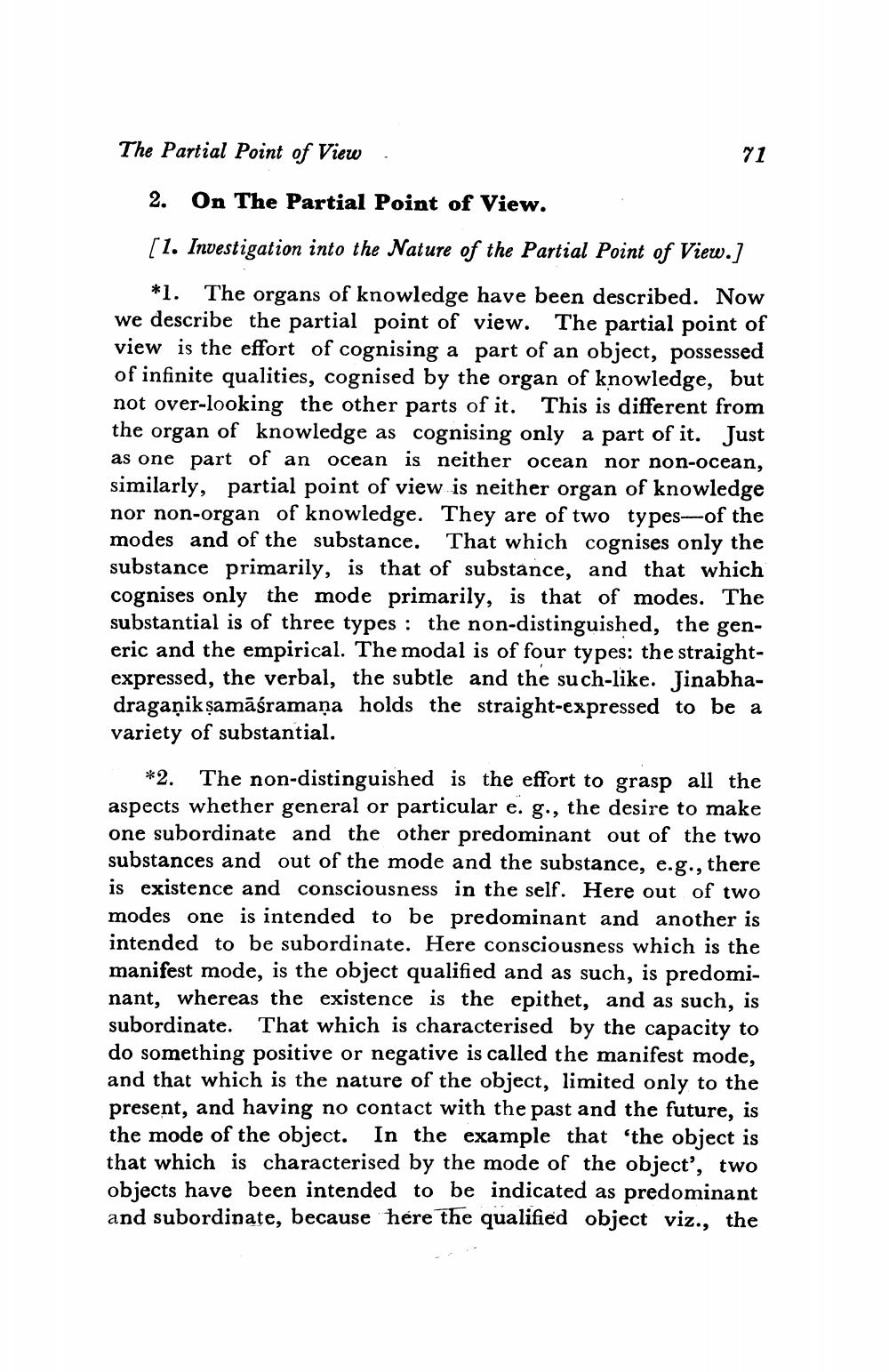________________
The Partial Point of View
71
2. On The Partial Point of View. [1. Investigation into the Nature of the Partial Point of View.]
*1. The organs of knowledge have been described. Now we describe the partial point of view. The partial point of view is the effort of cognising a part of an object, possessed of infinite qualities, cognised by the organ of knowledge, but not over-looking the other parts of it. This is different from the organ of knowledge as cognising only a part of it. Just as one part of an ocean is neither ocean nor non-ocean, similarly, partial point of view is neither organ of knowledge nor non-organ of knowledge. They are of two types of the modes and of the substance. That which cognises only the substance primarily, is that of substance, and that which cognises only the mode primarily, is that of modes. The substantial is of three types : the non-distinguished, the generic and the empirical. The modal is of four types: the straightexpressed, the verbal, the subtle and the such-like. Jinabhadragaạik şamāśramana holds the straight-expressed to be a variety of substantial.
*2. The non-distinguished is the effort to grasp all the aspects whether general or particular e. g., the desire to make one subordinate and the other predominant out of the two substances and out of the mode and the substance, e.g., there is existence and consciousness in the self. Here out of two modes one is intended to be predominant and another is intended to be subordinate. Here consciousness which is the manifest mode, is the object qualified and as such, is predominant, whereas the existence is the epithet, and as such, is subordinate. That which is characterised by the capacity to do something positive or negative is called the manifest mode, and that which is the nature of the object, limited only to the present, and having no contact with the past and the future, is the mode of the object. In the example that 'the object is that which is characterised by the mode of the object', two objects have been intended to be indicated as predominant and subordinate, because here the qualified object viz., the




